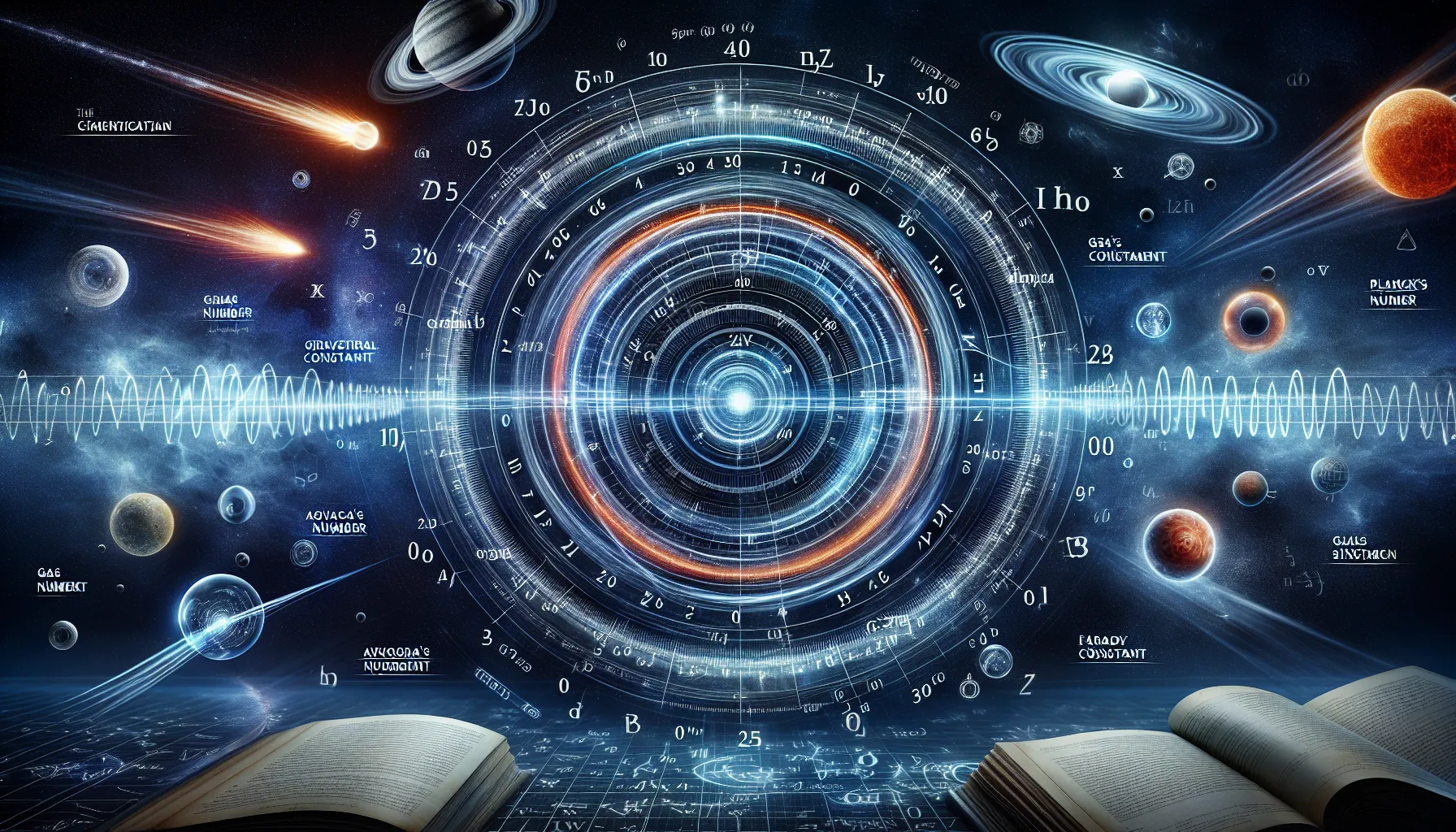Key Takeaways
- A constant in science is a value or principle that remains fixed under specified conditions, enabling accurate predictions and reliable experiments.
- Types of constants include universal physical constants, such as the speed of light and Planck’s constant, and context-specific experimental constants like temperature or pressure.
- Constants play a crucial role in isolating variables during experiments, ensuring consistency and reproducibility across studies.
- Examples of constants include Avogadro’s number in chemistry, the gravitational constant in physics, and the gas constant in thermodynamics.
- Challenges in identifying constants arise from external influences, such as environmental factors or human error, emphasizing the need for controlled conditions and precise measurements.
When I first started learning about science, the idea of a “constant” felt a bit mysterious. It sounded like something unchanging in a world full of variables, but I didn’t quite grasp its importance at first. Over time, I realized constants are like the anchors of scientific understanding—they keep everything grounded.
A constant in science is a value or principle that doesn’t change, no matter the conditions. It’s what allows scientists to make reliable predictions and test theories. Without constants, experiments would feel like guesswork, and progress would be a lot harder. Think of them as the dependable pieces of a puzzle that help everything else fall into place.
What Is A Constant In Science?
A constant in science refers to a value or principle that remains fixed under specified conditions. It serves as a reference point, ensuring consistency and reliability in experiments and theories. Constants help standardize measurements, making comparisons possible across different studies.
Scientific constants are either universal or context-specific. Universal constants apply universally, such as the speed of light in a vacuum (approximately 299,792,458 meters per second). Context-specific constants, like a spring constant in physics, vary based on the system being analyzed.
These fixed values simplify complex problems by reducing variability. For example, Planck’s constant (6.62607015 × 10⁻³⁴ Js) is pivotal in quantum mechanics, linking energy to frequency. Constants like these remain unchanged to ensure scientific methods generate reproducible results.
The Role Of Constants In Scientific Experiments

Constants play a critical role in ensuring that experiments produce consistent and reliable findings. By holding certain factors stable, they create a controlled environment that isolates the effects of variables.
Importance Of Constants In Accurate Results
Constants maintain consistency across measurements, allowing scientists to accurately observe the effects of variables. For example, controlling temperature in a chemical reaction ensures that observed changes are due to reactants, not external conditions. Constants provide a benchmark, ensuring that results are comparable regardless of the setup. In long-term studies, constants like a fixed environment help track trends without interference from changing conditions.
Differentiating Between Constants And Variables
Constants remain unchanged throughout experiments, while variables change to assess specific outcomes. For instance, in studying how light intensity affects plant growth, the light’s brightness varies, but constants like soil type, water, and temperature remain fixed. Differentiating these roles ensures experiments are structured, with variables tested against a stable framework provided by constants. This distinction is essential for drawing meaningful conclusions.
Types Of Constants In Science

Constants in science fall into various categories based on their application and scope. Two major types are physical constants and experimental constants.
Physical Constants
Physical constants are universal values that remain unchanged under all conditions in nature. Examples include the speed of light (approximately 299,792,458 m/s), the gravitational constant (6.67430 × 10⁻¹¹ m³/kg/s²), and Planck’s constant (6.62607015 × 10⁻³⁴ J·s). These constants underpin fundamental physical laws and define core relationships in fields like electromagnetism, thermodynamics, and quantum mechanics. For instance, Planck’s constant links energy and frequency, while the gravitational constant governs the force of attraction between masses. These values ensure that scientific equations and calculations yield consistent results across various contexts.
Experimental Constants
Experimental constants control specific factors during scientific experiments. These constants differ depending on the experimental setup and isolate the effects of variables. For instance, in a chemical reaction, temperature or pressure might serve as a constant to ensure that changes in the outcome result solely from manipulating reactants or concentrations. Another example is using a fixed spring constant (measured in N/m) in physics experiments to study force and displacement. By keeping such conditions stable, experimental constants provide a controlled environment for exploring specific phenomena without interference from external variations.
Examples Of Constants In Science

Constants appear across various scientific disciplines, forming the backbone of numerous laws and principles. Below are examples of constants in physics and chemistry that illustrate their significance.
Constants In Physics
Physics relies on constants to define and explain universal laws of nature.
- Speed of Light (c): The speed of light in a vacuum is approximately 299,792,458 meters per second. It’s fundamental to equations in both classical and modern physics, such as Einstein’s theory of relativity.
- Gravitational Constant (G): At roughly 6.674 × 10⁻¹¹ N·m²/kg², this constant determines the strength of gravitational force between two masses. It’s vital for understanding celestial mechanics and orbital dynamics.
- Planck’s Constant (h): With a value of 6.626 × 10⁻³⁴ J·s, Planck’s constant connects the energy of a photon to its frequency, foundational in quantum mechanics.
These constants remain invariant under all tested conditions, providing universal benchmarks in scientific calculations.
Constants In Chemistry
In chemistry, constants help describe the behavior of substances and reactions under specific conditions.
- Avogadro’s Number (Nₐ): At 6.022 × 10²³ particles per mole, this constant links the atomic scale to the macroscopic world, essential for calculating the number of atoms or molecules in a substance.
- Gas Constant (R): With a typical value of 8.314 J/(mol·K), this ties pressure, volume, and temperature in the ideal gas law, serving as a keystone in thermodynamic studies.
- Faraday’s Constant (F): Equating to about 96,485 C/mol, this represents the charge per mole of electrons, crucial in electrochemistry for understanding redox reactions.
Chemistry constants stabilize complex interactions and ensure accurate predictions in experimental and theoretical work.
The Challenges Of Identifying Constants
Identifying constants in science is not always straightforward. Variables in experiments and environmental influences often complicate the process, creating challenges for determining which factors truly remain unchanged.
Controlling Environmental Factors
External conditions can significantly affect experiments if not monitored. Inconsistent temperature, pressure, or humidity can introduce variability, making it difficult to confirm that a value or principle is truly constant. For example, fluctuations in temperature during chemical reactions might mask whether an observed change stems from a variable or an interfering factor. To address this, researchers often use carefully controlled environments, like climate-controlled rooms or sealed chambers, to eliminate these influences and verify consistency.
Human Error And Its Impact
Mistakes in measurements, calculations, or interpretations can hinder the identification of constants. Errors such as miscalibrated instruments, inaccurate record-keeping, or misunderstanding a parameter’s behavior under given conditions can lead to false conclusions. For instance, using an improperly calibrated scale may affect measurements of mass in an experiment, leading to inaccurate results when testing a physical constant. To minimize these issues, I rely on strict procedural guidelines, repeat trials, and peer verification to ensure that constants are accurately identified and validated.
Conclusion
Constants are the backbone of scientific exploration, providing the stability needed to make sense of a world filled with variables. They simplify the complex, create consistency, and allow us to uncover patterns that might otherwise go unnoticed. Without them, the reliability and progress of science would be far less certain.
Understanding and utilizing constants isn’t just about numbers or formulas—it’s about building a framework that lets us explore the unknown with confidence. From universal laws to controlled experiments, constants remind me how essential precision and consistency are in unlocking the mysteries of our universe.
Frequently Asked Questions
What is a constant in science?
A constant in science is a fixed value or principle that remains unchanged under specific conditions. It serves as a reference point to ensure reliability and consistency in experiments and theories, allowing scientists to make accurate predictions.
How are constants used in scientific experiments?
Constants are used to stabilize certain factors during experiments, creating a controlled environment. This ensures that observed changes result from manipulated variables, not external influences, allowing for reproducible and reliable results.
What is the difference between constants and variables?
Constants remain unchanged throughout an experiment, while variables are factors that scientists manipulate to observe outcomes. This distinction ensures that a stable framework exists for testing variable effects accurately.
What are the types of constants in science?
There are two major types of constants: physical constants, which are universal values like the speed of light, and experimental constants, which control specific conditions during experiments, such as temperature or pressure.
Why are constants important in science?
Constants provide stability and consistency, enabling scientists to compare results, test theories, and develop universal laws. They simplify complex problems by reducing variability and ensuring reliable experimental outcomes.
What are some examples of physical constants?
Examples of physical constants include the speed of light (c), Planck’s constant (h), and the gravitational constant (G). These values are fundamental to defining universal laws of nature.
What are experimental constants?
Experimental constants are specific factors controlled during experiments to isolate the effects of variables. For example, maintaining a constant temperature while studying a chemical reaction ensures accurate results.
How do scientists determine constants?
Scientists identify constants by conducting experiments under controlled conditions, eliminating external influences like temperature or pressure variability. Strict guidelines and repeat trials help confirm their accuracy.
What challenges arise in identifying constants?
Challenges include environmental influences, inconsistent conditions, human error, and miscalibrated instruments. These factors complicate determining constants, requiring controlled environments and stringent procedures.
Can a constant ever change?
A scientific constant remains fixed under the specific conditions it is defined for. However, if the conditions change or new discoveries alter understanding, the role or value of a constant could be re-evaluated.

